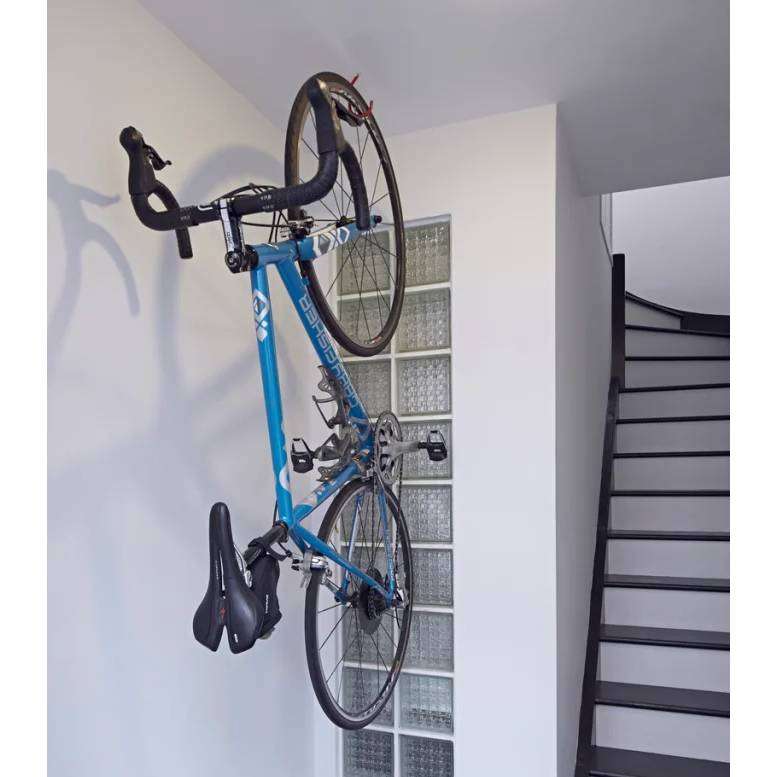
Should you lean your bike against your camper?
Since the definition talks about information, it is worth thinking about whether it also functions in the autotourism environment? I wouldn't expect a story about a black tourist who, like the Black Volga, terrorizes campsites by kidnapping naughty children. Rather, there are certain myths that, with a little understanding, are very easy to debunk.
One is to lean camping gear against the bed or wall of a camper or trailer. Right! Friction causes scratches, damage to painted or laminated surfaces and deteriorates the appearance. Although there are ways to remove them from paint, they are very difficult to remove from PVC materials. There is a school of thought that says you shouldn't, or even shouldn't, lean anything against your camper or trailer. The camper moves when someone inside walks or jumps. The supports do not always unfold, leaning against the wall of the ski, otherwise the poles will definitely move and eventually fall over. Don't resist! But is this assumption true? Not necessary.
It all depends on whether the equipment on the surface acts like a pumice stone for your heels or just like a sponge when washing the body... The most controversial piece of touring equipment in this context is the bicycle. So, let's figure out what elements can damage our vehicle.
If your bike doesn't have a kickstand or foldable stand, the easiest way is to lean it against the wall of your car. Whether this action remains non-invasive or leaves unsightly marks depends on the type of bike, the flex handlebars used and the design of the saddle. Most often, we place the bike with the saddle and handlebars at a certain angle to make it stable. The situation is very safe if we ride a road bike with drop handlebars. Kind of like a bicycle. Here, most often, in order to reduce the weight of the equipment, the saddle is devoid of decorative parts and is covered only with a layer of silicone or other insulation with a flexible coating applied to it. The steering wheel is covered with a so-called cape, which not only guarantees good grip, but also provides some cushioning for the hand while driving. If the handlebars are adjusted correctly, the bicycle will not only not damage the surface of the wall, but will also not tip over with small movements of the “kennel”. Remember that the brake and shift levers should not touch the camper or trailer.
The situation is different with bicycles equipped with straight handlebars. Unfortunately, here the equipment can easily lose stability, sometimes - if it is light - even as a result of a strong gust of wind, not to mention the movements of the trailer or camper. So what if the handles have rubber tips, and the saddle is soft, like a mother-in-law’s sofa. A falling bicycle will almost certainly hit a body with an axle holder or other protruding element. Of course, if there are no soft ends at the ends of the head tube, some flexible material can be placed under them, but the risk of capsizing remains high.
It's best to place your bike (if you have one) on a stand, although this also comes with some risks. Soft ground, such as grass or dirt, can give way to a thin foot and cause the bike to fall. Here it can also damage our car if it is very close. It is better to park bicycles away from the “house”, on a hard surface. It is worth knowing that there are different places for installing supports. Sometimes the manufacturer installs them near the rear wheel mount, and sometimes closer to the axis of the carriage - the axis on which the connecting rods with pedals are installed. However, the first method is worse because it does not guarantee sufficient stability for heavier bicycles. But that's not all! Currently, bicycle legs have an adjustable arm, the length of which can be experimentally set to such a length that the stability of the "parked" bicycle is as high as possible.
What if it's an MTB, enduro, or other straight-handlebar sports bike? Here you can use special wheel stands, purchased separately. The most stable ones are those in which the support touches the part of the axle between the hub and the frame. Here you can set both the height and the appropriate end of the support “fork”, designed for bicycles with classic V-brakes or disc brakes. However, if we don’t have such a support with us, the bike won’t be particularly angry with us if we just lay it on its side for a minute, on the grass or on the mat in the vestibule. However, remember to always place it on the left side. On the right side are the drive components - disks, cassette, switches, which are worth saving on. The pressure the derailleur puts on the dropout connecting it to the frame can cause it to bend and cause the shift assembly to malfunction. And the aesthetic value - why scratch the switch and get it dirty?
So, not all bikes are the same, and each may perform differently when leaned against the side of a car. With straight or sports handlebars, with or without a basket - you should always be confident in what you are doing, approach the issue of temporary bicycle storage wisely, remembering these simple rules... Don't fall for myths. And watch out for the wind! An aluminum city bike is unlikely to be susceptible to this, but the peloton's PRO sports machines, built almost entirely from carbon, can weigh as little as 6.8kg, which is the lower limit set by the UCI for competitors. An ideal setting for caravanning... If not for their cost. The most expensive ones can cost more than PLN 40. But what should you do to avoid exceeding the full permissible weight!

